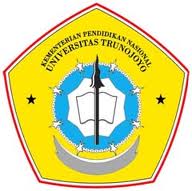Anda belum Log-in!
Silahkan Log in
Selamat Datang di Portal Digital Content Publisher
Selasa , 05 August 2025
Perpustakaan sebagai jantung pendidikan tinggi di Indonesia, harus mampu memberi kontribusi yang berarti bagi pelaksanaan proses belajar mengajar di perguruan tinggi.
di-posting oleh 100331100055 pada 2014-07-22 09:57:30 • 1533 klik
IMPLEMENTASI POTENSI BAHAYA JAMU TRADISIONAL "SELOKARANG SEKALOR" MENGGUNAKAN PRINSIP Hazard Analisis Critical Control Point (HACCP) (Studi Kasus PJ. Madura Ayu di Kabupaten Sampang)
IMPLEMENTATION OF THE TRADITIONAL HERBAL POTENTIAL DANGER OF "SELOKARANG SEKALOR" USING THE PRINCIPLE OF Hazard Analysis Critical Control Point (HACCP) (Case Study in Madura Ayu Herbal Company, Sampang Madura)
disusun oleh SYARIFATUL JAMILA
| Subyek: | PRINSIP Hazard Analisis Critical Control Point (HACCP) (Studi Kasus PJ. Madura Ayu di Kabupaten Sampang) |
| Kata Kunci: | Keamanan Pangan Jamu Tradisional Konsep HACCP |
[ Anotasi Abstrak ]
Jamu tradisional adalah ramuan yang berupa bahan tumbuhan, hewan, mineral, sediaan galenik atau campuran dari bahan-bahan tersebut, yang secara tradisional telah digunakan untuk pengobatan. Keamanan pangan terhadap obat tradisional perlu diperhatikan hingga produk tersebut sampai ke tangan konsumen, dimana keamanan pangan terhadap konsumen dapat terlaksana jika setiap industri kecil dan sedang dapat menerapkan prinsip-prinsip Hazard Analysis Critical Control Point (HACCP). Penelitian ini dimulai dengan mengidentifikasi potensi bahaya biologis dan bahaya fisik pada bahan baku, proses produksi, serta produk akhir dari jamu tradisional. Hasil identifikasi terhadap jamu tradisional “ Selokarang Sekalor “menunjukkan potensi bahaya yang termasuk CCP pada bahan baku terdapat pada temulawak (CCP 1) yaitu terdapat kapang, serpihan plastik, kayu dan kerikil , dan untuk tahap proses produksi yang termasuk CCP antara lain penyiapan dan sortasi bahan baku (CCP 1), penyangraian (CCP 2), peracikan (CCP 3) dan pengayakan (CCP 4), sedangkan pada produk akhir (CCP 1). Penerapan konsep HACCP di PJ. Madura Ayu dapat meminimalisir potensi bahaya bahan baku, proses produksi, dan produk akhir sehingga produk akhir yang dihasilkan tidak membahayakan dan memiliki tingkat resiko yang tidak terlalu signifikan. Kata kunci : Keamanan Pangan, Jamu Tradisional, Konsep HACCP
Deskripsi Lain
Traditional herb is an herb which ingredient comes from plants, animals, minerals, galenic plantation or the mixture of these materials that is traditionally used for treatment. Food safety on traditional medicine should be in supervising until the product comes to consumers, where the food safety on consumers can be still conducted if each small industry applies the principal of Hazard Analysis Critical Control Point (HACCP). This study starts by identifying the potential of biological and physical danger on raw materials, production process and the final product of traditional medicine. The result of identification on”Selokarang Sekalor” herb states that the raw materials potential danger belongs to CCP in the Temulawak (CCP1); means it contains mold, plastic chips, wood and gravel. On the other hand, the production processes that belong to CCP are: preparing and raw materials sorting (CCP 1), roasting (CCP2), compounding (CCP3), sieving (CCP4), and the final production (CCP1). The concept implementation of HACCP in Madura Ayu Herb Company is able to reduce the potential danger of raw materials, production process and final production the product produced is not dangerous and has insignificant risk level. Keywords: Food safety, Traditional Herb, HACCP concept.
| Kontributor | : BURHAN,S.TP,MT;IFFAN MAFLAHAH,S.TP.,MSI |
| Tanggal tercipta | : 2014-07-02 |
| Jenis(Tipe) | : Text |
| Bentuk(Format) | |
| Bahasa | : Indonesia |
| Pengenal(Identifier) | : TRUNOJOYO-Tugas Akhir-5593 |
| No Koleksi | : 100331100055 |
 Download File Penyerta (khusus anggota terdaftar)
Download File Penyerta (khusus anggota terdaftar) 1. TRUNOJOYO-Tugas Akhir-5593-100331100055_ABSTRAK.pdf - 307 KB
1. TRUNOJOYO-Tugas Akhir-5593-100331100055_ABSTRAK.pdf - 307 KB 2. TRUNOJOYO-Tugas Akhir-5593-100331100055_COVER.pdf - 341 KB
2. TRUNOJOYO-Tugas Akhir-5593-100331100055_COVER.pdf - 341 KB 3. TRUNOJOYO-Tugas Akhir-5593-100331100055_CHAPTER I.pdf - 143 KB
3. TRUNOJOYO-Tugas Akhir-5593-100331100055_CHAPTER I.pdf - 143 KB 4. TRUNOJOYO-Tugas Akhir-5593-100331100055_CHAPTER II.pdf - 179 KB
4. TRUNOJOYO-Tugas Akhir-5593-100331100055_CHAPTER II.pdf - 179 KB 5. TRUNOJOYO-Tugas Akhir-5593-100331100055_CHAPTER III.pdf - 384 KB
5. TRUNOJOYO-Tugas Akhir-5593-100331100055_CHAPTER III.pdf - 384 KB 6. TRUNOJOYO-Tugas Akhir-5593-100331100055_CHAPTER IV.pdf - 541 KB
6. TRUNOJOYO-Tugas Akhir-5593-100331100055_CHAPTER IV.pdf - 541 KB 7. TRUNOJOYO-Tugas Akhir-5593-100331100055_CONCLUSION.pdf - 85 KB
7. TRUNOJOYO-Tugas Akhir-5593-100331100055_CONCLUSION.pdf - 85 KB 8. TRUNOJOYO-Tugas Akhir-5593-100331100055_REFERENCES.pdf - 132 KB
8. TRUNOJOYO-Tugas Akhir-5593-100331100055_REFERENCES.pdf - 132 KB 9. TRUNOJOYO-Tugas Akhir-5593-100331100055_APPENDICES.pdf - 1026 KB
9. TRUNOJOYO-Tugas Akhir-5593-100331100055_APPENDICES.pdf - 1026 KB Dokumen sejenis...
Dokumen sejenis...Tidak ada !
 Dokumen yang bertautan...
Dokumen yang bertautan... Kembali ke Daftar
Kembali ke Daftar 